Affiliate links on Android Authority may earn us a commission. Learn more.
Home workout plan: Train every muscle group with one routine
Since the coronavirus pandemic struck in 2020, interest in bodyweight training and any home workout plan has skyrocketed. The web has responded in kind, resulting in a flood of resources, videos, and articles on that very subject.
Training with bodyweight is a smart way to work out and offers many advantages, so this is good news. If more people come out of this situation understanding how to manipulate their own bodies to improve performance and aesthetics, they’ll be better off for it.
But with so much information out there, things can get a little bit muddled. Should you be doing high reps of push-ups? Do you need to learn planche? How do you train your legs? And can bodyweight training really emulate the benefits of heavy compound lifts? There are many different approaches to home workouts, each with different benefits.
Also read: The best home fitness streaming services: Bring the gym class to you.
That’s why this article exists: to provide a simple, full-body home workout plan that can benefit anyone — from gym rats, to pro athletes, to people just wanting to get into shape. A full-body workout plan is simple to follow and means you can stop worrying about the details and focus on progressing.
If nothing else, this can provide a useful starting point for you to build from.
Note: This plan comes from a qualified personal trainer, health writer, and fitness vlogger — I’m not just a tech journalist, y’know!
The full-body home workout plan
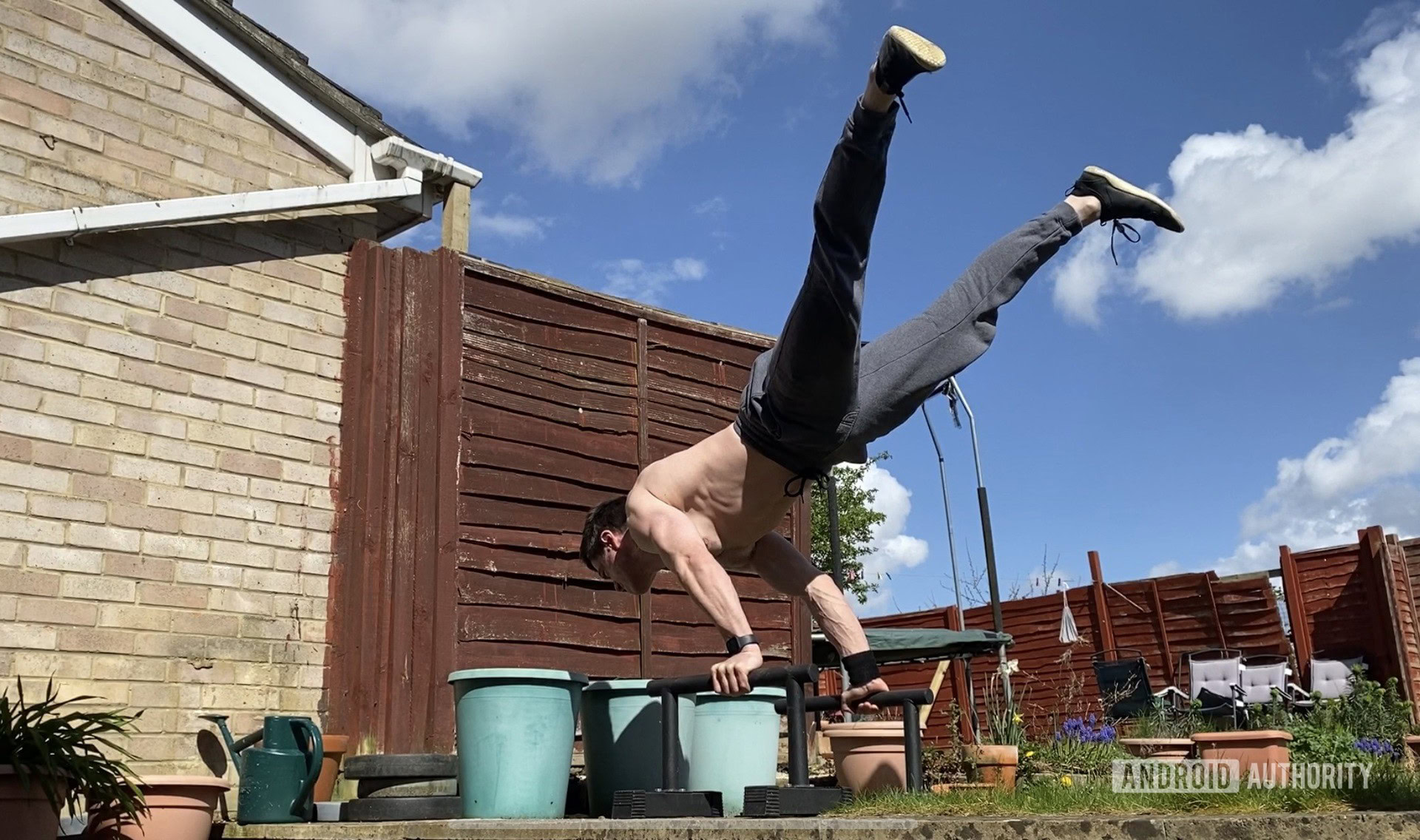
First, I’m going to share the home workout plan with you. After that, I’ll provide a little commentary on why this program should be effective for anyone.
Each exercise will have many different variations starting from easy (on the left) all the way to extremely difficult (on the right). Don’t feel bad if you can’t do the hardest variations — neither can I in many cases.
Once you can perform the target number of repetitions for any movement or hold a position for one minute, increase the difficulty by switching to the tougher option. Otherwise, stop each set once you can no longer perform reps with good form.
Don't feel bad if you can't do the hardest variations — neither can I in many cases.
For any unilateral exercise — meaning it involves just one arm or leg — make sure to double the number of reps to work each side of the body equally.
Rest for one minute between each set and each exercise.
This program can be performed three times a week, making sure to leave at least 48 hours between each session.
Note: perform a warm-up before this home workout plan.
Knee push-ups | Push-ups | Archer push-ups | One-handed push-ups
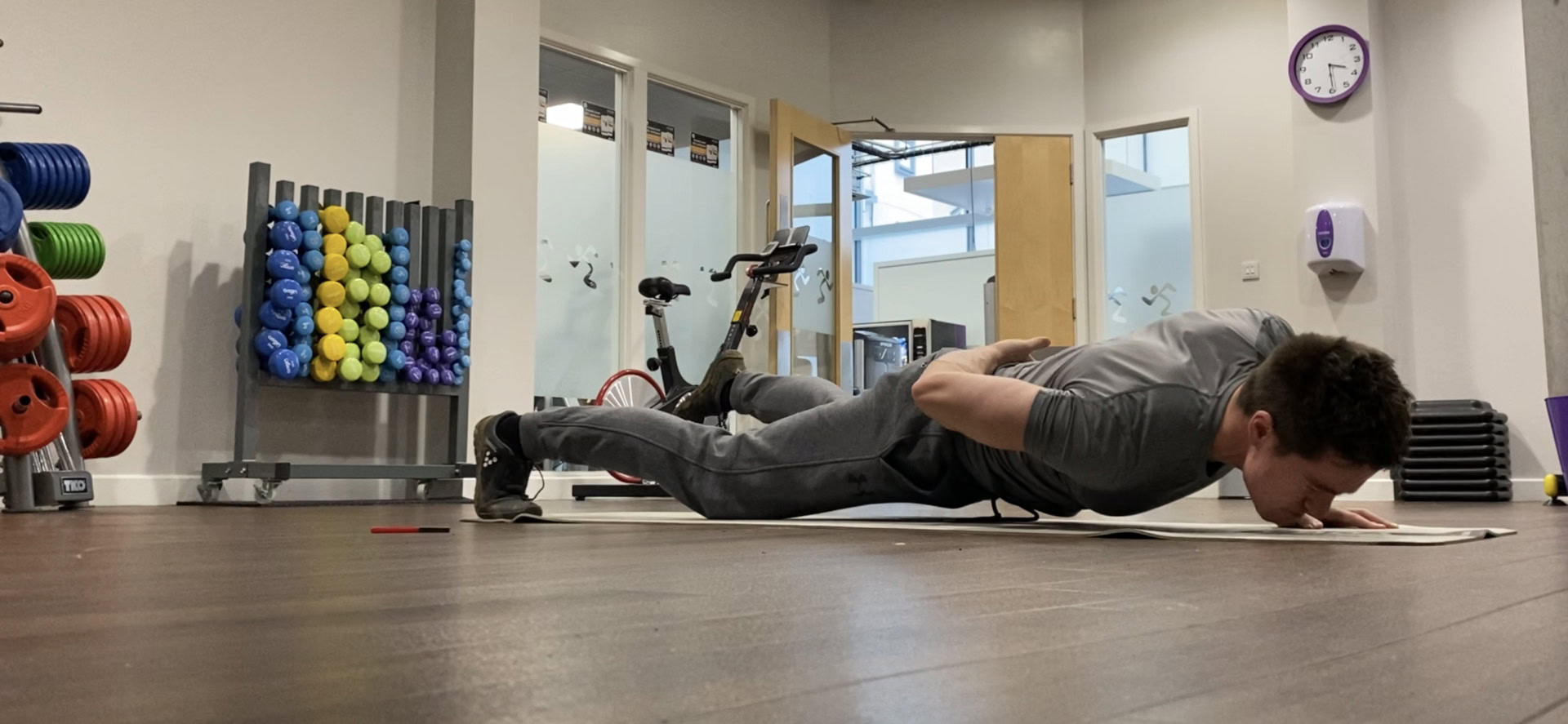
Time: 12/1 minute
Sets: 3
The regular push-up is a fantastic move for building pec, shoulder, and tricep strength. It also develops a rigid core and is perhaps the best alternative to a bench press unless you have parallel bars at your disposal. If you can’t perform a regular push-up, you can keep your knees on the ground to reduce the amount of resistance (alternatively, stand up and lean against a wall).
It is great at bringing out ripped definition in your abs.
Once the push-up becomes easy and you can perform more than 10 repetitions, try advancing to movements that isolate one side of the body more. The archer push-up involves moving from one hand to the other and then lowering slowly. A one-handed push-up involves removing one hand from the floor altogether.
Not only does this increase the amount of weight you are lifting with each side, but it also forces you to brace your body against rotational forces (called anti-rotation). It also significantly increases the involvement of your core and can help develop your stability and athletic performance. Oh, and it is great at bringing out ripped definition in your abs.
Diamond push-ups | Knuckle push-ups | L-sit flutter kicks | V-sit | Mana
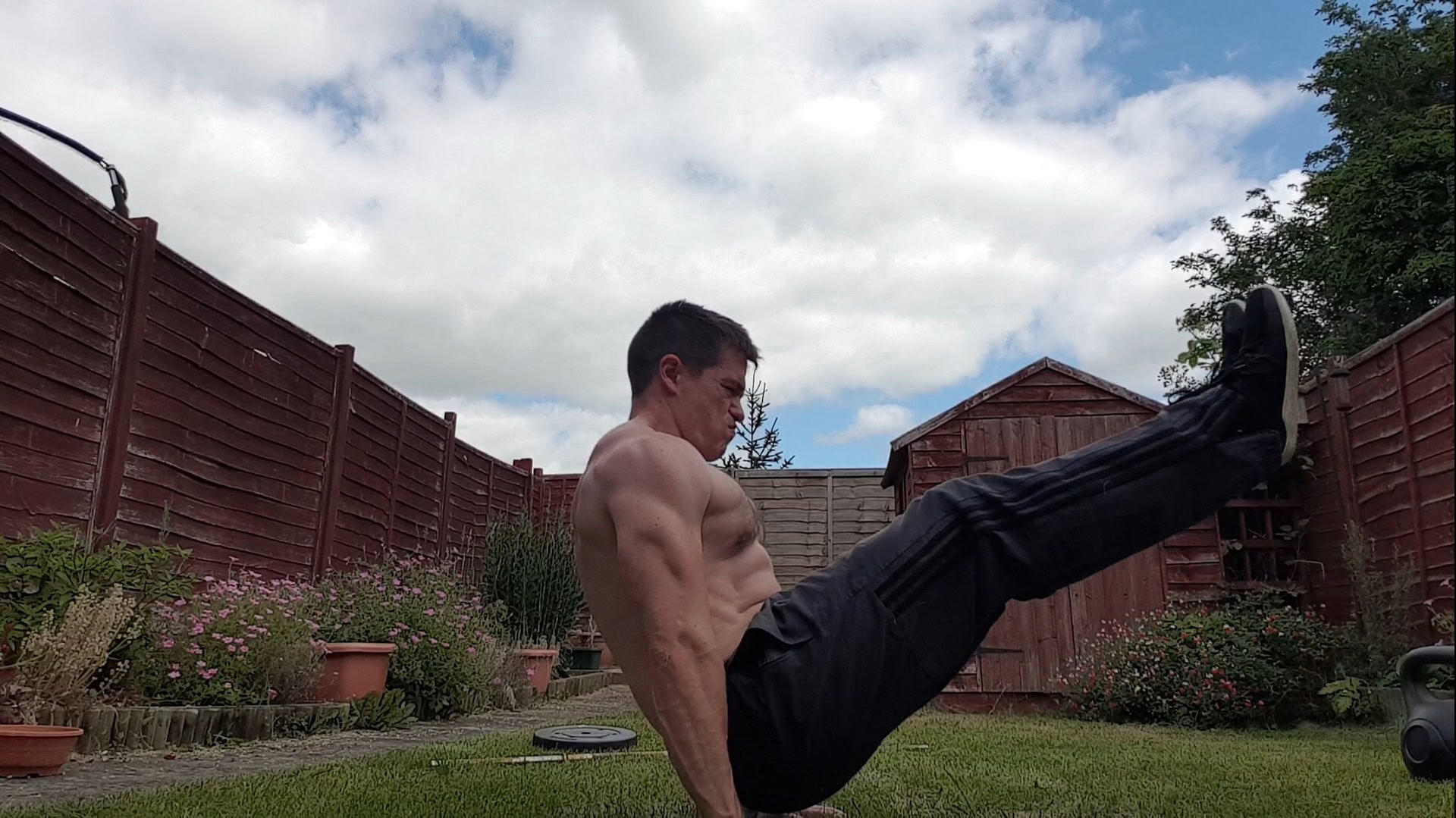
Target reps: 12
Sets: 2
Diamond push-ups bring your hands directly beneath your sternum in a triangle position. This moves the activation to the triceps, helping to create bigger arms. Knuckle push-ups do the same thing by bringing the hands down to the waist and supporting your weight on your knuckles. It’s crucial not to forget the triceps in a home workout plan, seeing as they should take up two-thirds of the muscle mass in the upper arm.
The L-sit is a bodyweight static hold that involves resting on your hand and holding your legs out straight in front of you. Most of your weight is held by your triceps, and you’ll also get ab activation. Gently flutter the feet up and down to make this even more of an ab exercise.
The v-sit takes this one step further by pointing the legs directly up. Mana is an extremely advanced calisthenics/gymnastic move that involves doubling the legs entirely back to point behind you. Hey… it’s something to aspire to.
Plank holds | Planche leans | Pseudo planche push-ups| Planche push-ups
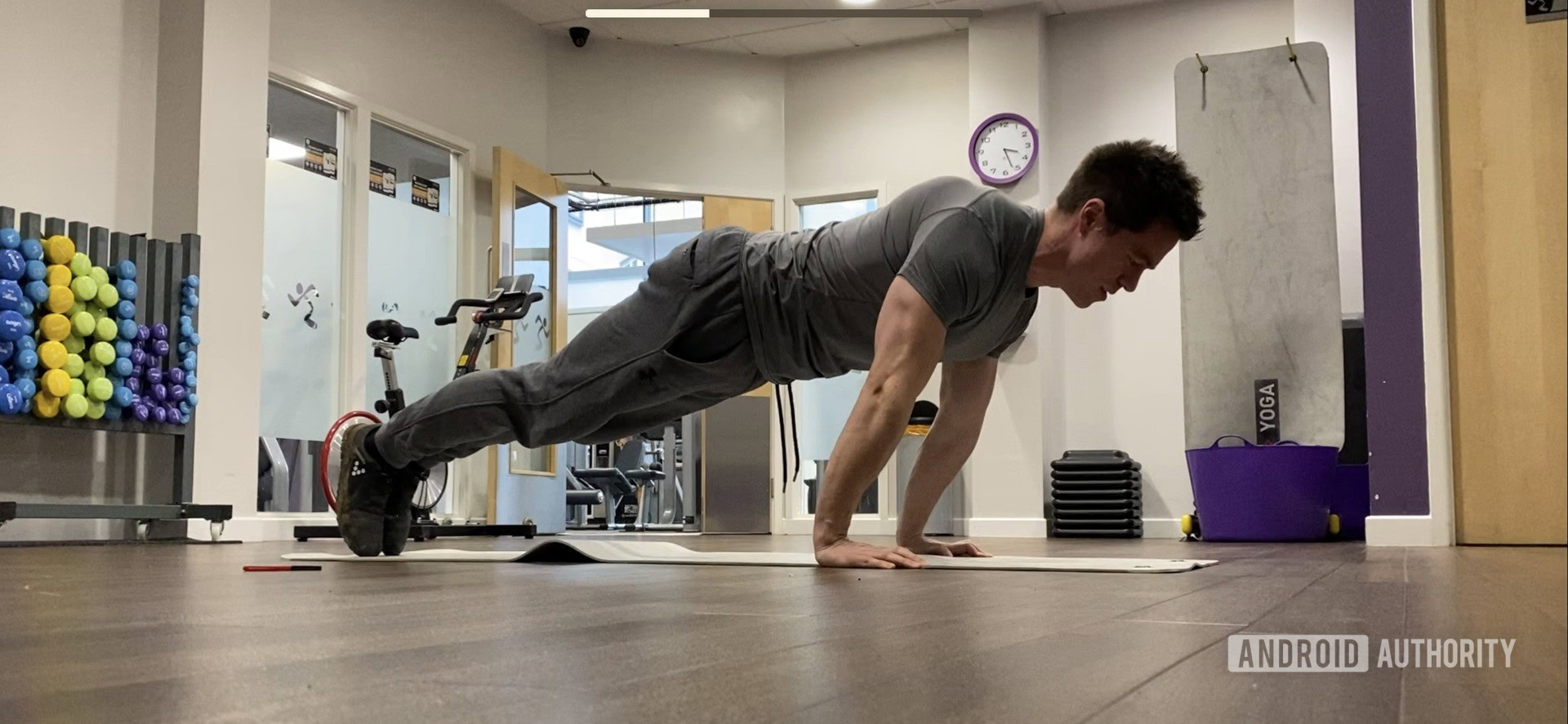
Target reps: 12
Sets: 2
The planche is a stunning movement you’ll find all over social media that involves holding the body parallel to the ground while balancing on straight arms. It looks truly gravity-defying.
It trains aspects of strength typically missed by most gym programs. In particular, this can develop your straight-arm strength, teaching you to keep your elbows fully locked out and scapula protracted while resting your weight on your hands. What better time to improve an overlooked aspect of your training?
It trains aspects of strength that are typically missed by most gym programs.
Most of us will be miles from accomplishing this feat, in which case focussing on the planche lean (locking out the arms and then leaning slightly forward) or even the plank hold (resting on your toes and forearms) can help build up to that.
(Personal note: I just achieved my straddle planche, which is an easier progression. I’m very stoked about that, except it busted my bicep in the process.)
The key is to focus on pushing the arms into the ground so that the shoulder blades push forward across your back (there should be no dip between them). At the same time, contract your abs as though trying to do a crunch to engage the “hollow body.”
Pike push-ups | Elevated pike push-ups | Assisted handstand press | Handstand push-ups
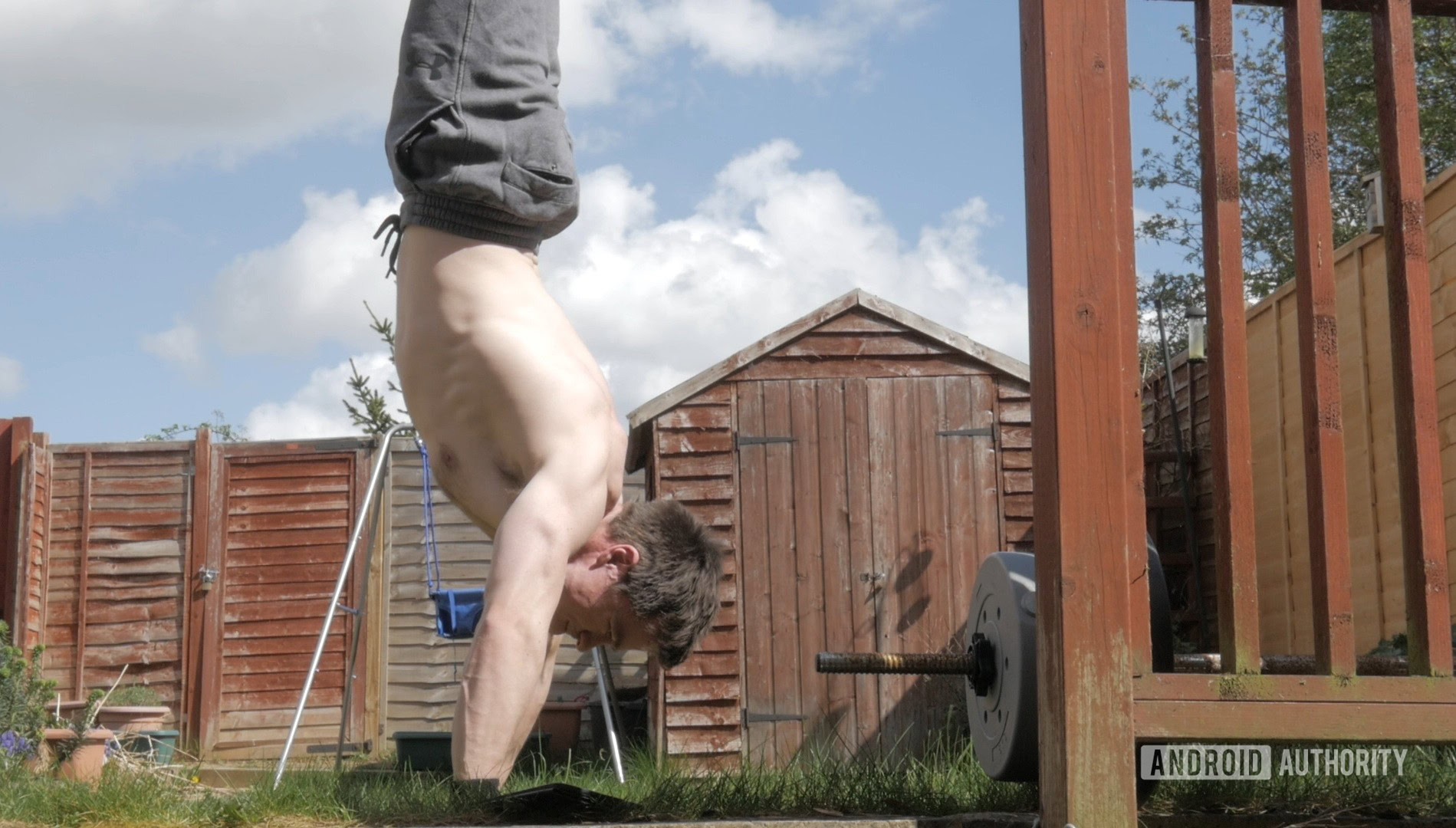
Target reps: 12
Sets: 3
The pike push-up is a downward-facing push-up. It involves getting into the push-up position, then bringing your hands toward your feet and pushing your buttocks in the air to form an upside-down “V.” Now lower yourself to the ground, focusing on engaging the deltoids (shoulders) as you do.
When this becomes too easy, you can increase the difficulty by raising your feet on some blocks or a sofa. This increases your range of motion and places the weight a little more squarely over the shoulders. This is a common inclusion in any home workout plan as one of the best options for training shoulders. An alternative is the decline push-up.
Also read: The best home fitness tips, gear, and apps to keep you feeling your best
Once that becomes too easy, it’s time to kick your feet up against a wall and perform full handstand presses. Finally, with practice, you may be able to move away from the wall and balance your full body weight on your hands. At this point, the movement will involve your core a lot more, and that work done during the planche and plank will really help you to keep your torso rigid while your weight is stacked over your wrists and shoulders.
(Again, I’m getting there, but I really need to straighten out my posture and improve shoulder mobility.)
Performing free-standing handstands is not essential for building big shoulders, but it’s a great party trick to emerge from quarantine with — and it improves your athleticism in other ways to boot.
Crunches | V-ups | Dragon Flag
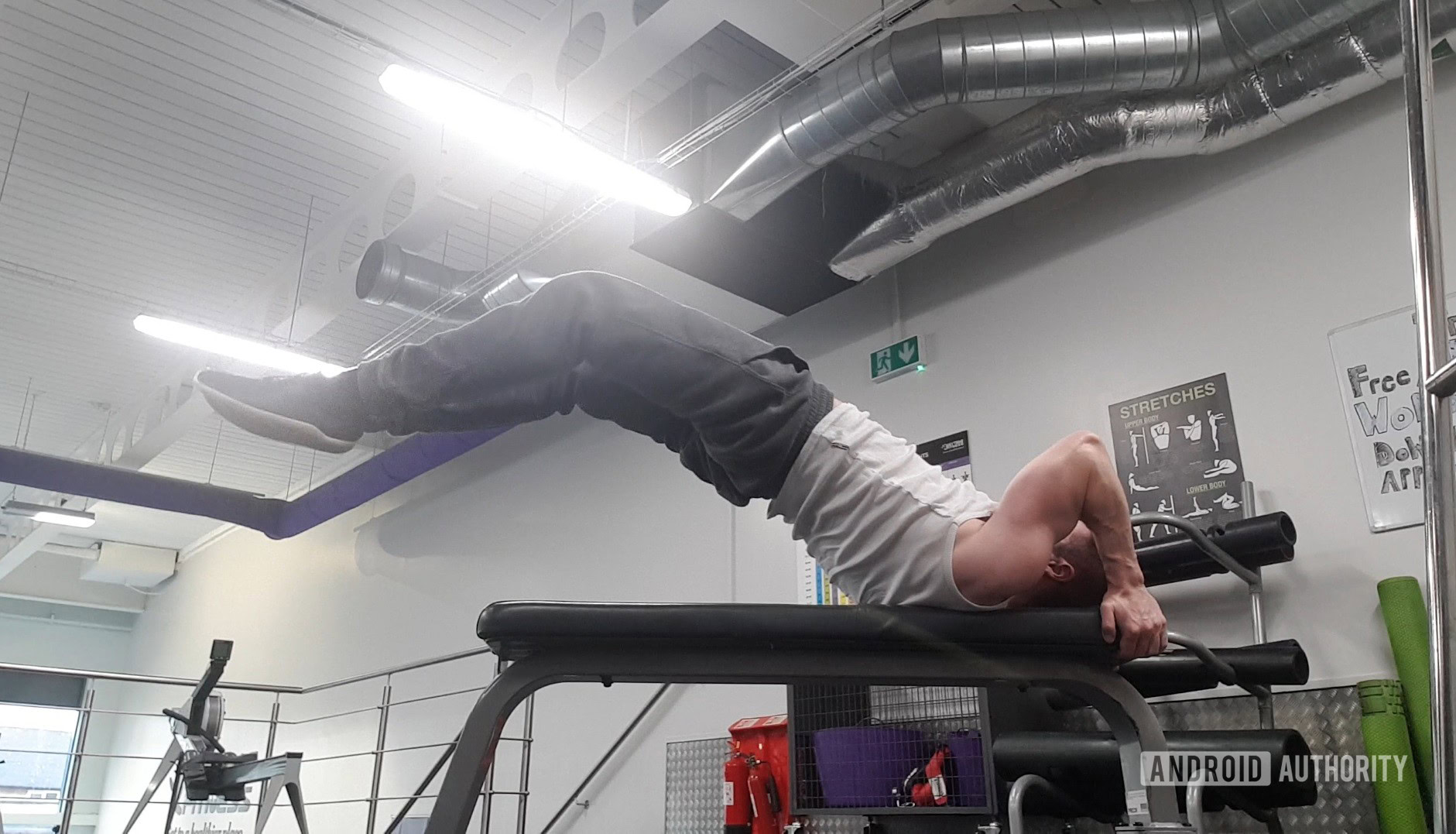
Target reps: 12
Sets: 3
These exercises are designed to develop core stability while defining the rectus abdominis (the six-pack). We all know how to perform a crunch, but make sure that you are truly contracting the ab muscles during this movement, rather than “folding” at the hips. For the V-ups, you’ll be lying flat and then bringing your legs straight up to meet your torso as you sit up. At the apex of the movement, you’ll be resting on your buttocks with your hands pointing forward past your legs. Don’t allow yourself to lie completely flat when you return to the starting position, but instead, keep your heels and upper back raised slightly off the ground.
It also looks cool as hell.
The dragon flag is Bruce Lee’s famous move that involves holding onto an anchor point behind your head, resting your body on your shoulders, and then lowering your legs keeping your torso completely straight. This engages the core in an amazing way to prevent flexion in the spine and develop insane abs and athleticism. It also looks cool as hell.
Air squats | Cossack squats | Pistol squats
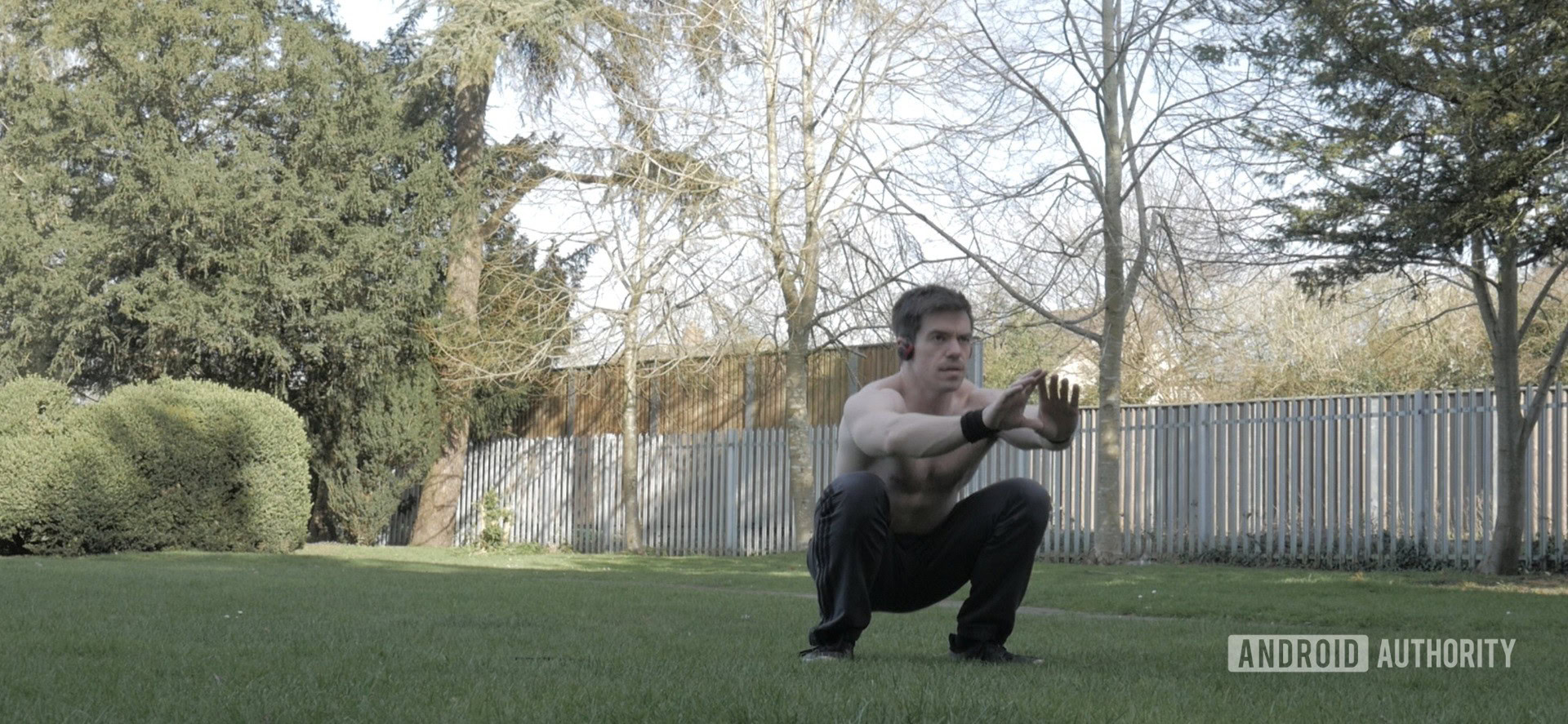
Target reps: 30 | 15 | 10
Sets: 3
Training the legs with bodyweight alone is a big challenge. No bodyweight move can truly mimic a deadlift (if you have a kettlebell, then this can be used for hip hinges), and no bodyweight squat will provide the same kind of challenge or increased bone density. However, air squats performed for high repetitions can provide some different benefits by increasing capillary density, helping your legs grow faster, and recovering better when you return to the gym. Moreover, this is a great way to check in on your technique and make sure you have the mobility for a nice deep squat.
There is no bodyweight move that can truly mimic a deadlift.
Cossack squats can increase the challenge more by moving the weight down on just one leg. The other leg will stretch out to the other side and rest on the heel once you enter the deepest point of the movement (where your buttocks are touching your heel). This movement not only develops more strength than an air squat by putting your weight on just one side, but it will also increase mobility by opening up the hips. Mobility should come as a by-product of any great home workout plan.
Finally, if you have the strength and mobility, you can perform a pistol squat. This calisthenics “skill” looks great on Instagram and is accomplished by dropping into a full one-legged squat while the other leg sticks out directly in front, raised off the ground. Only perform this movement for reps if you are confident that you have the strength and mobility to perform it without significant rounding in the spine or risk of falling over.
Indian squats
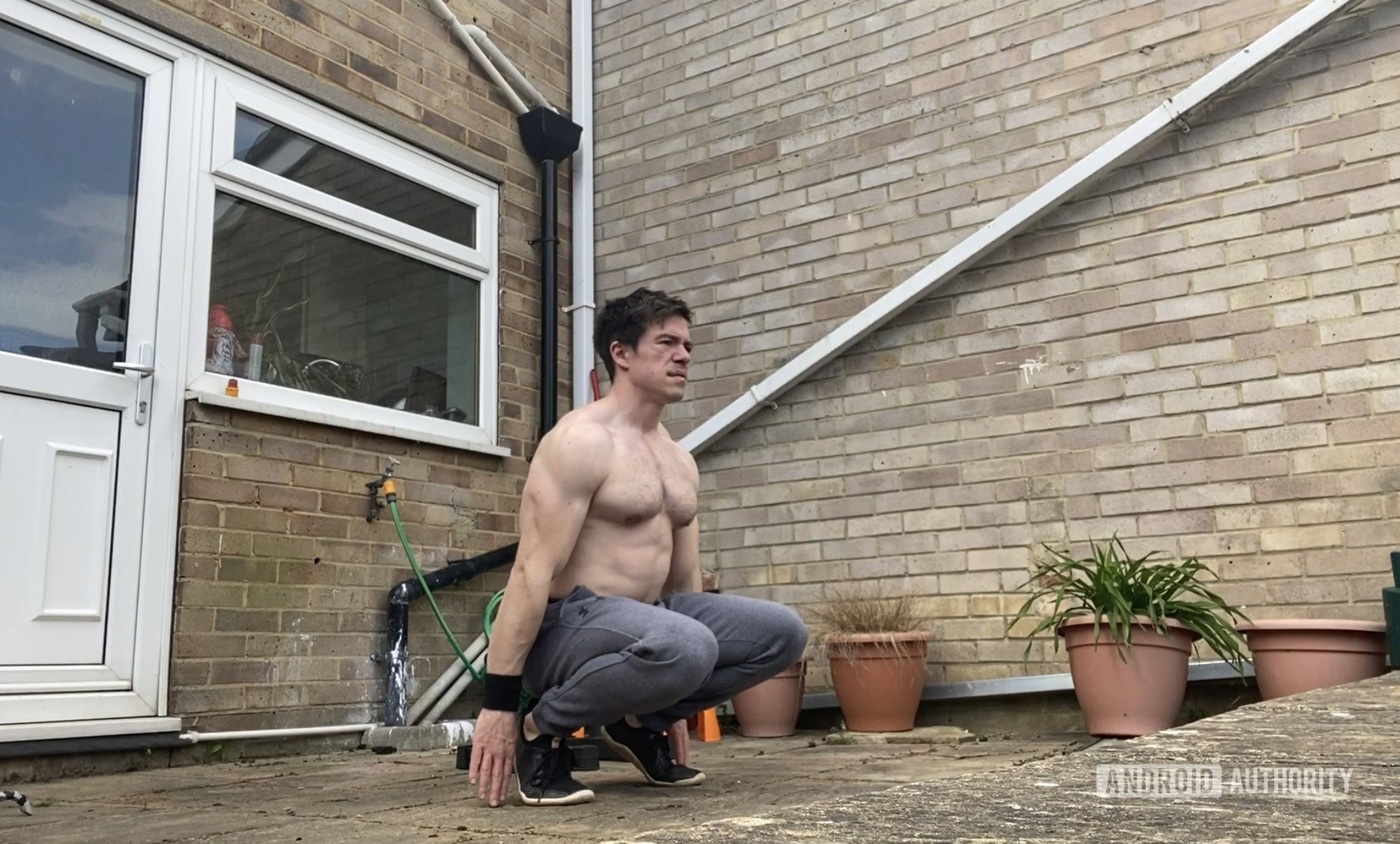
Target reps: 30
Sets: 3
The Indian squat is a lesser-known variation of the air squat where you raise onto the balls of your feet at the bottom of the movement. This puts the emphasis more on the quads compared with the more hamstring/glute-heavy squat. Performed for high reps, it’s great for building thicker legs, and it can also result in improved athleticism.
This is one of the few moves you can include in a home workout plan that will result in visibly bigger legs. It also has the benefit of developing the calves.
A tougher variation of the Indian squat is the sissy squat, though some people believe these can be tough on the knees. For that reason, I’m suggesting Indian squats for high reps for everyone. Trust me: you’ll feel the pump.
Bodyweight row | Pull-ups | Explosive pull-ups | Muscle-ups
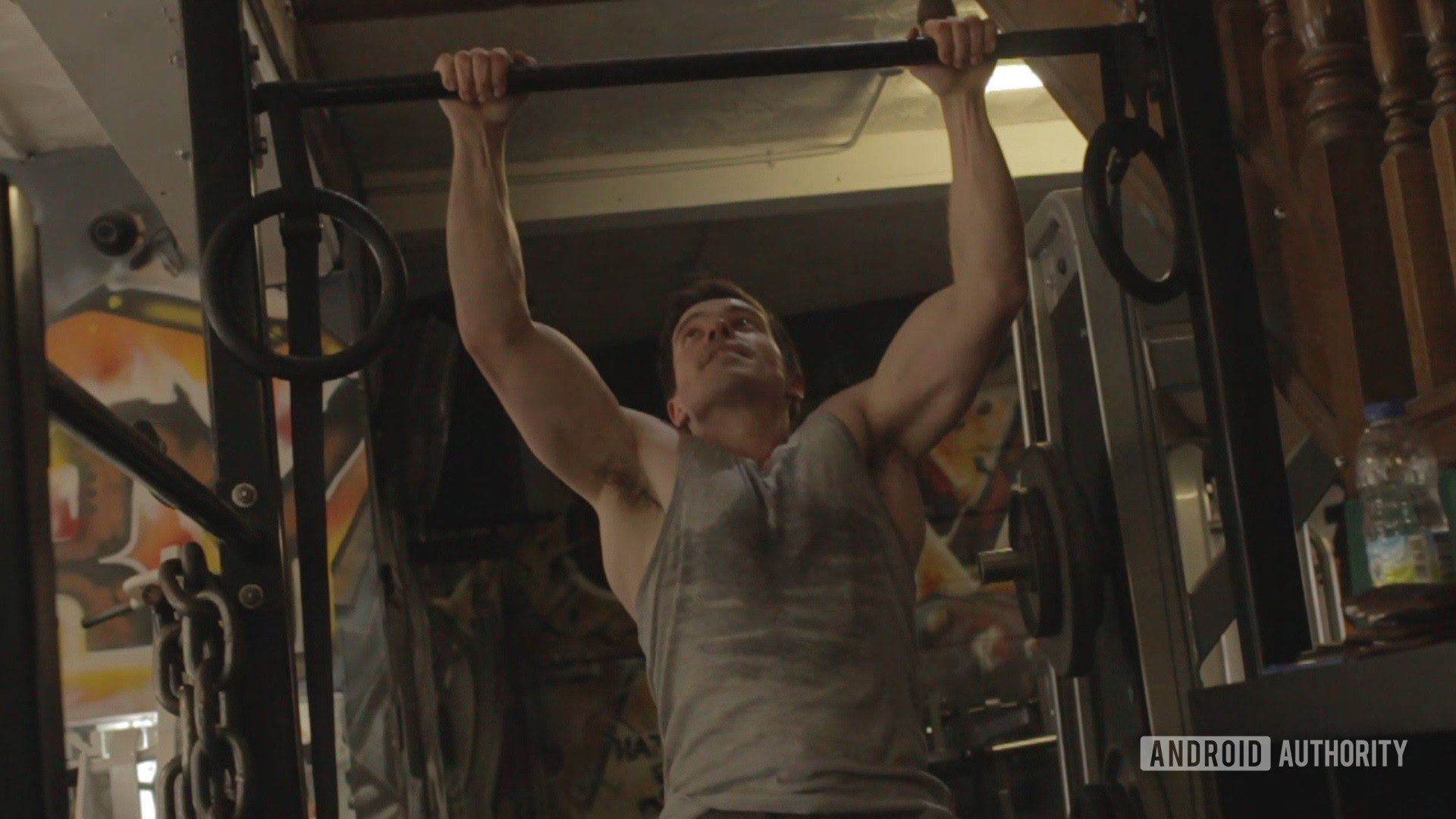
Target reps: 12
Sets: 3
Pull-ups are a fantastic tool for developing strong, wide lats, as well as more core stability. Perform these properly with your hands just wider than your shoulders, using an overhand (pronated) grip. You’ll pull yourself directly up until your chin is over the bar, then lower until your arms are completely straight. No kicking your way up!
Also read: The best Android fitness apps for Android
If you can’t do this yet or don’t have access to a pull-up bar, you can lie under a table with your body and legs out straight in front of you, then pull up just your upper body. This can also be performed by trapping a towel in the door.
To develop more strength and explosiveness, focus on exploding up and out of the movement. Eventually, you may be able to pass over the bar to perform a muscle-up.
Assisted chin-ups | Chin-ups | Assisted one-arm chin-up | Rope climb | One-arm chin-up
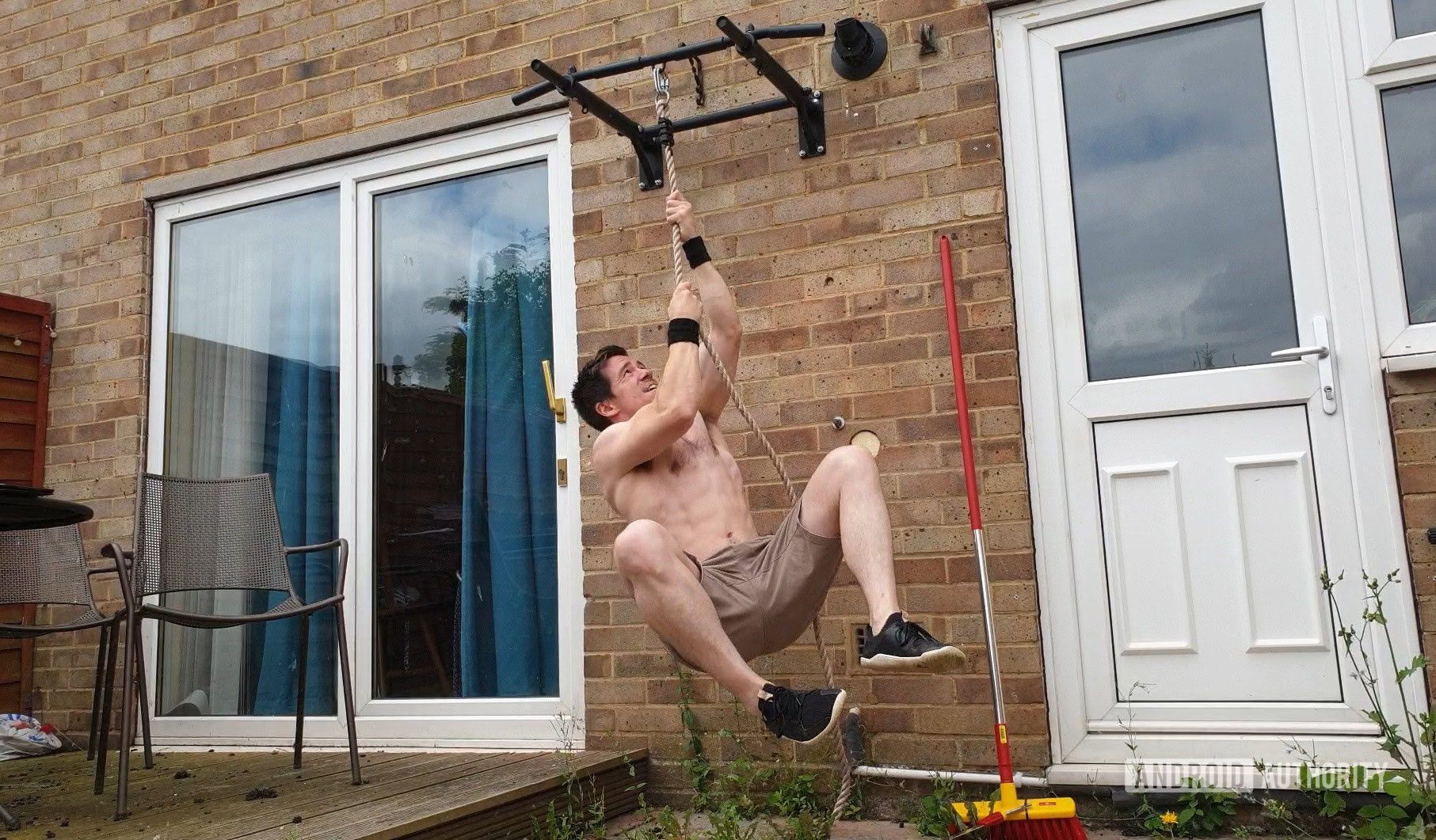
Target reps/Time: 12
Sets: 3
Chin-ups are pull-ups with a supinated (underhand) grip, and your hands brought slightly closer together. No home workout plan is complete without them.
This move creates more activation in the biceps, making this a key tool for increasing the size of your arms. If you can’t chin-up yet, try placing a chair underneath you and use this to assist slightly with the movement.
If you don’t have a pull-up bar, you can use bodyweight rows with a supinated grip for the next best thing. Make sure to really feel the squeeze in your biceps.
Moving to a unilateral movement will increase the resistance and thereby grow the biceps even more. To develop to that point, try wrapping a towel over your pull-up bar and holding this in your free hand to support your way through the chin-up movement. You can also practice rope climbing if you have a rope available. This develops the grip, core, lats, and biceps and involves a lot of hanging from one hand — making it perfect for progressing toward the one-armed chin-up.
High repetition push-ups
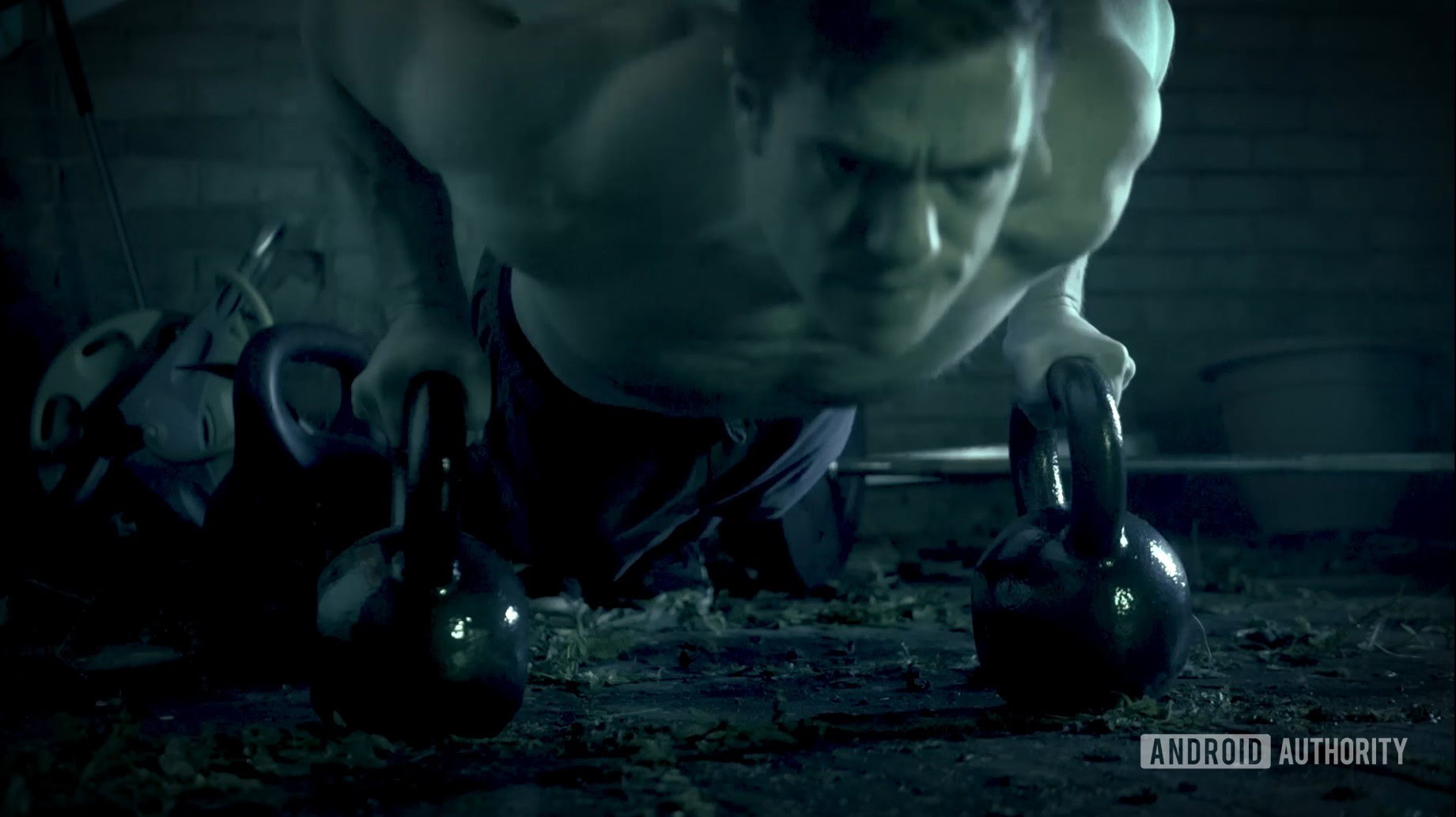
Target reps: >100
Sets: 2
To end, we’re going to attempt two sets of 100-rep push-ups. If you don’t manage 100 reps, go for as long as you can until failure. This is a strategy known as a “flush set” in bodybuilding. It will fill the upper body with blood while at the same time providing a light form of “resistance cardio” to develop your work capacity so that you don’t burn out as quickly during workouts.
Simple printable version
(Cross out what doesn’t apply to you)
Knee Push-Ups | Push-Ups | Archer Push-Ups | One-Handed Push-Ups
Diamond Push-Ups | Knuckle Push-Ups | L-Sit Flutter Kicks | V-Sit | Mana
Plank Hold | Planche Lean | Pseudo Planche Push-Up | Planche Push-Up
Pike Push-Ups | Elevated Pike Push-Up | Assisted Handstand Press | Handstand Push-Up
Crunches | V-Ups | Dragon Flag
Air Squats | Cossack Squats | Pistol Squat
Indian Squats
Chin-Ups | Rope Climb | One Arm Chin Up
Bodyweight Row | Pull-Ups
High Repetition Push-Ups
The theory
While there are lots of similar programs out there, I believe that this one is uniquely adaptable to those training for various reasons and at a wide range of levels.
One of the biggest challenges when working out from home is finding challenging movements as you progress. This guide incorporates advanced calisthenics exercises and their simpler progressions to challenge both the newcomer and the expert. The selection on offer should target all the major muscle groups and many smaller supporting muscle groups that aid stability and power. That makes this a functional workout that will also build an aesthetic physique.
See also: The best workout apps and exercise apps for Android